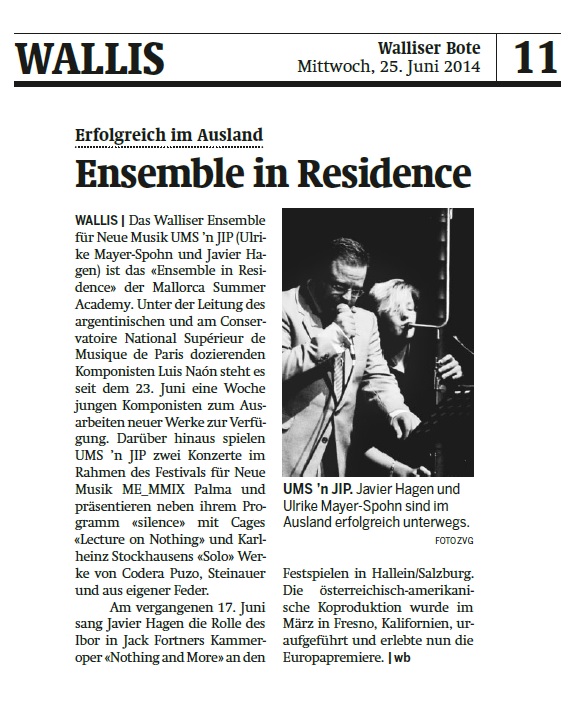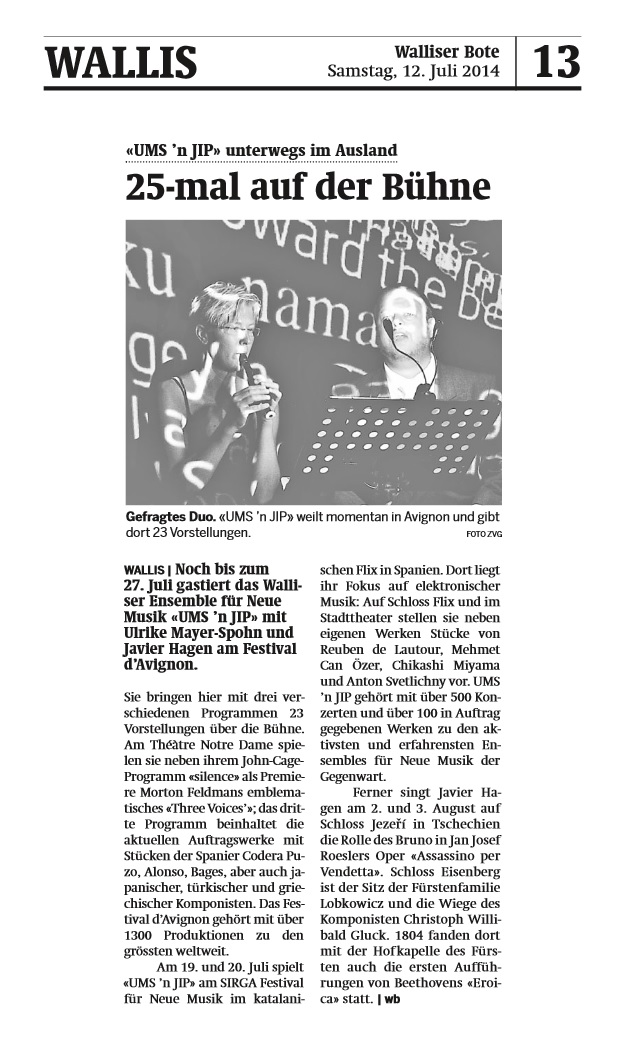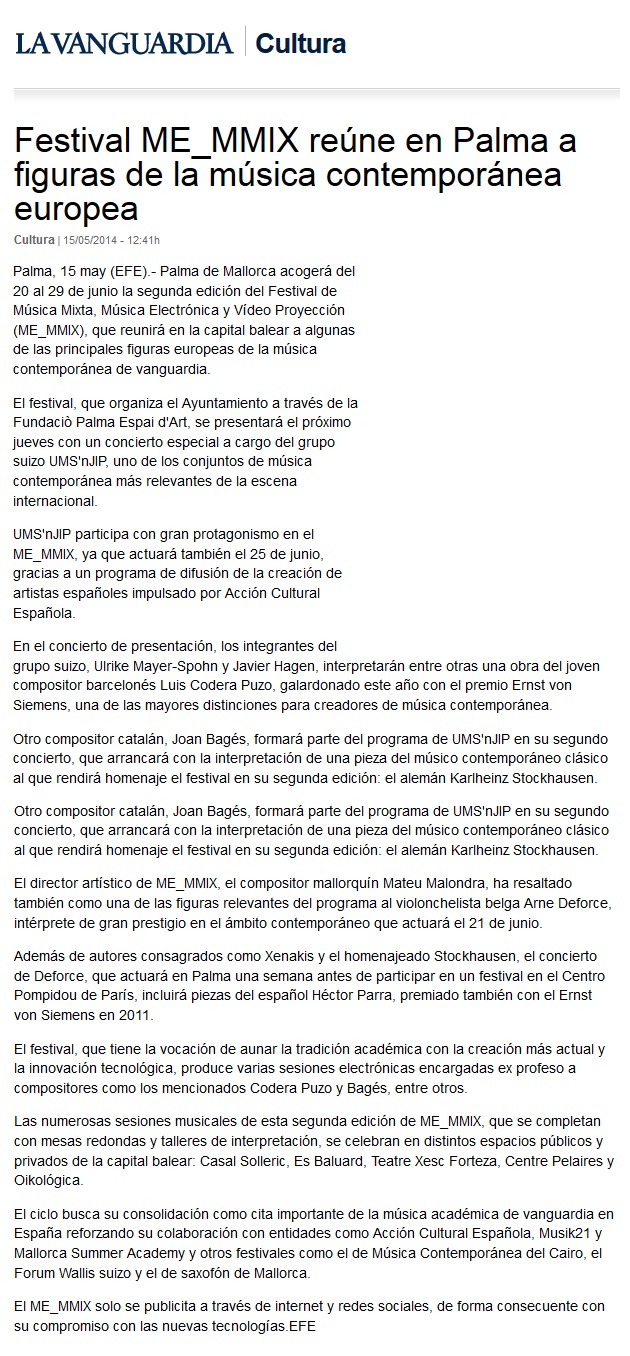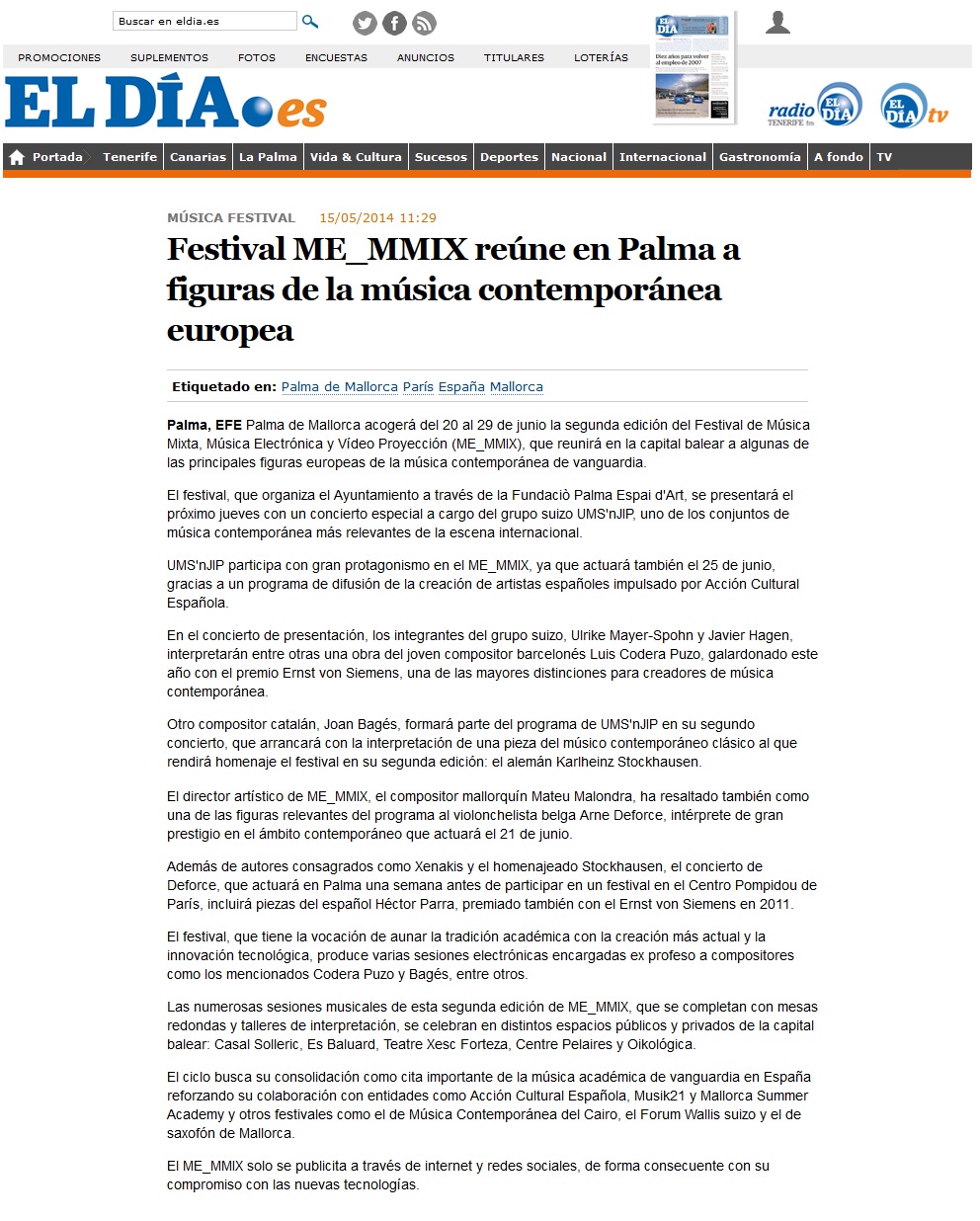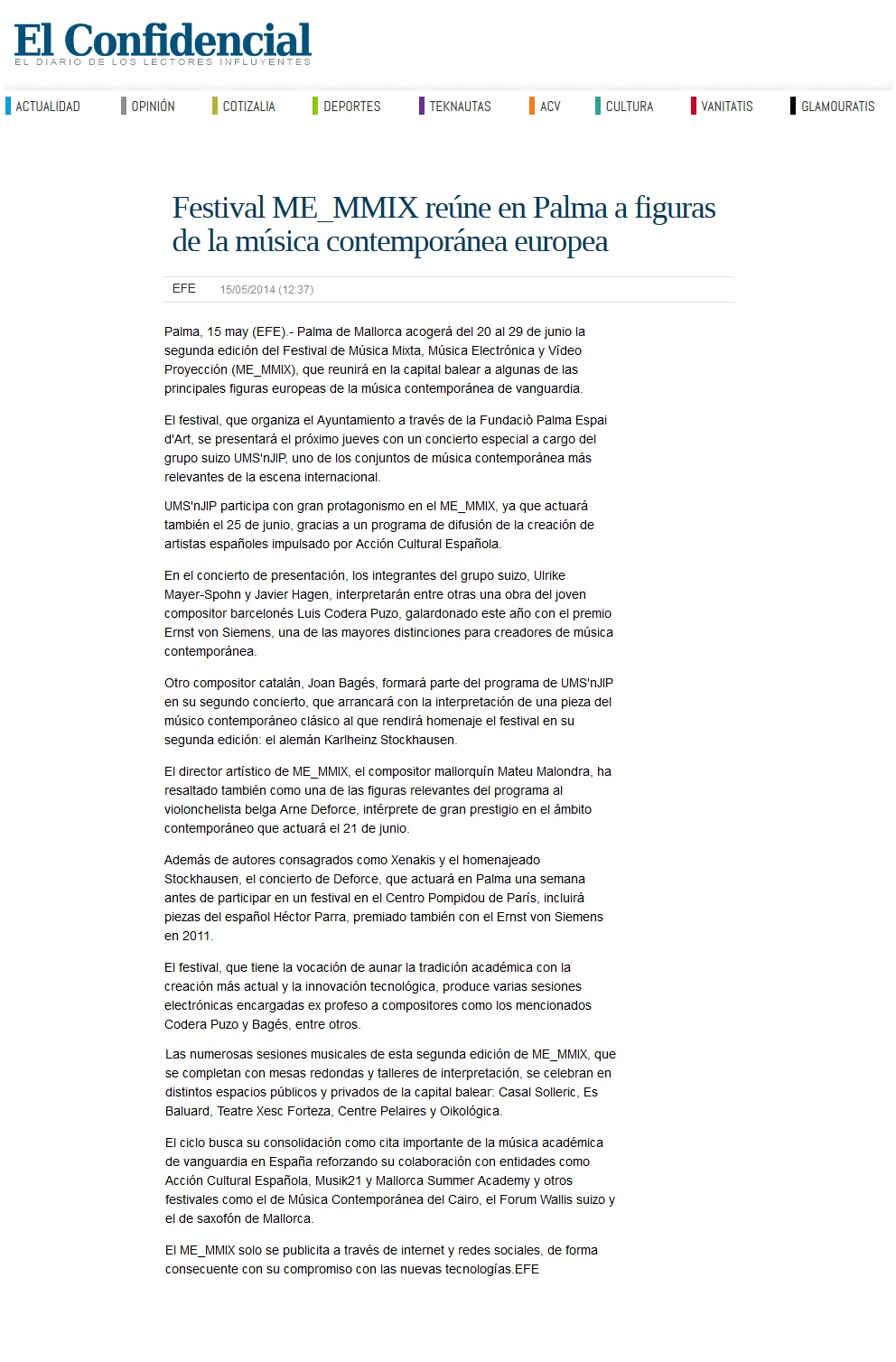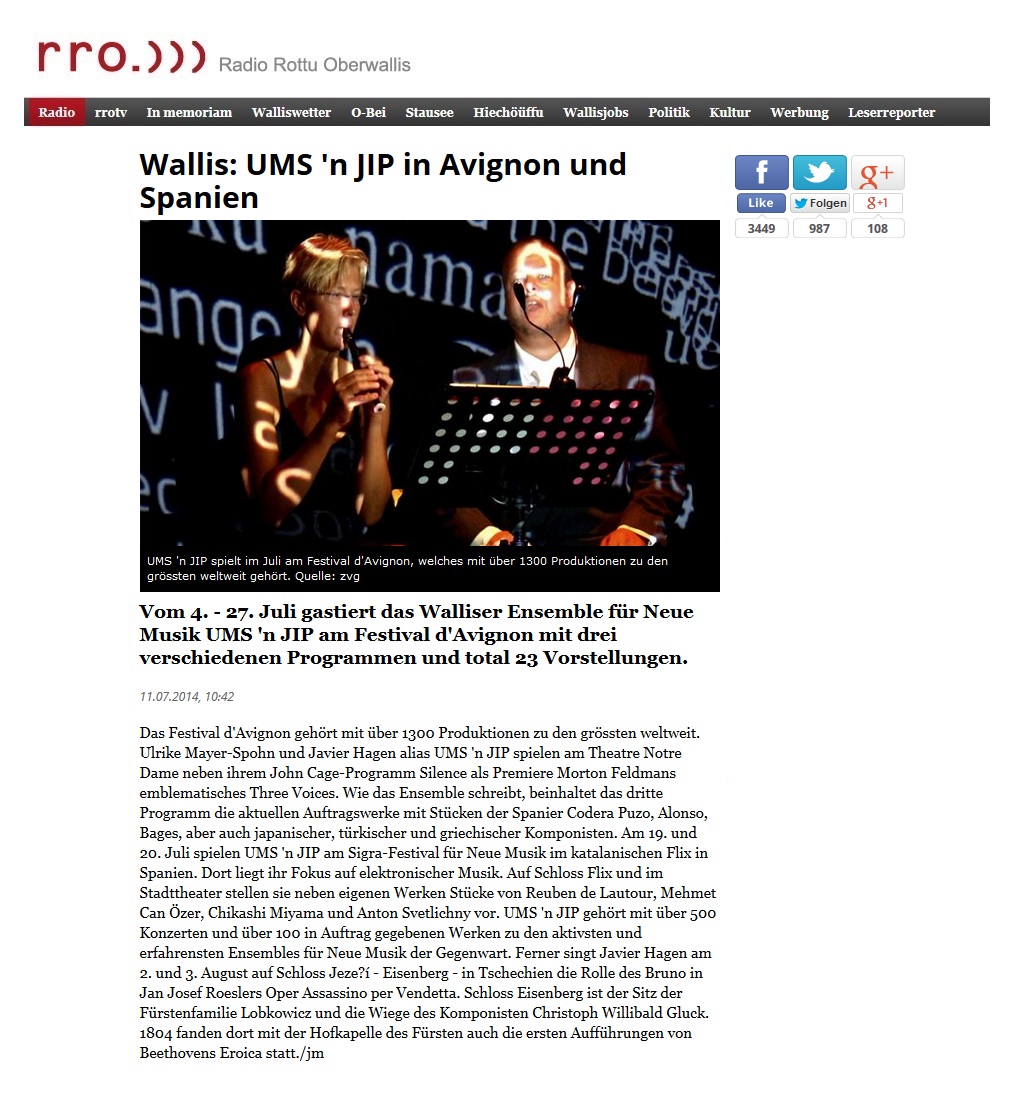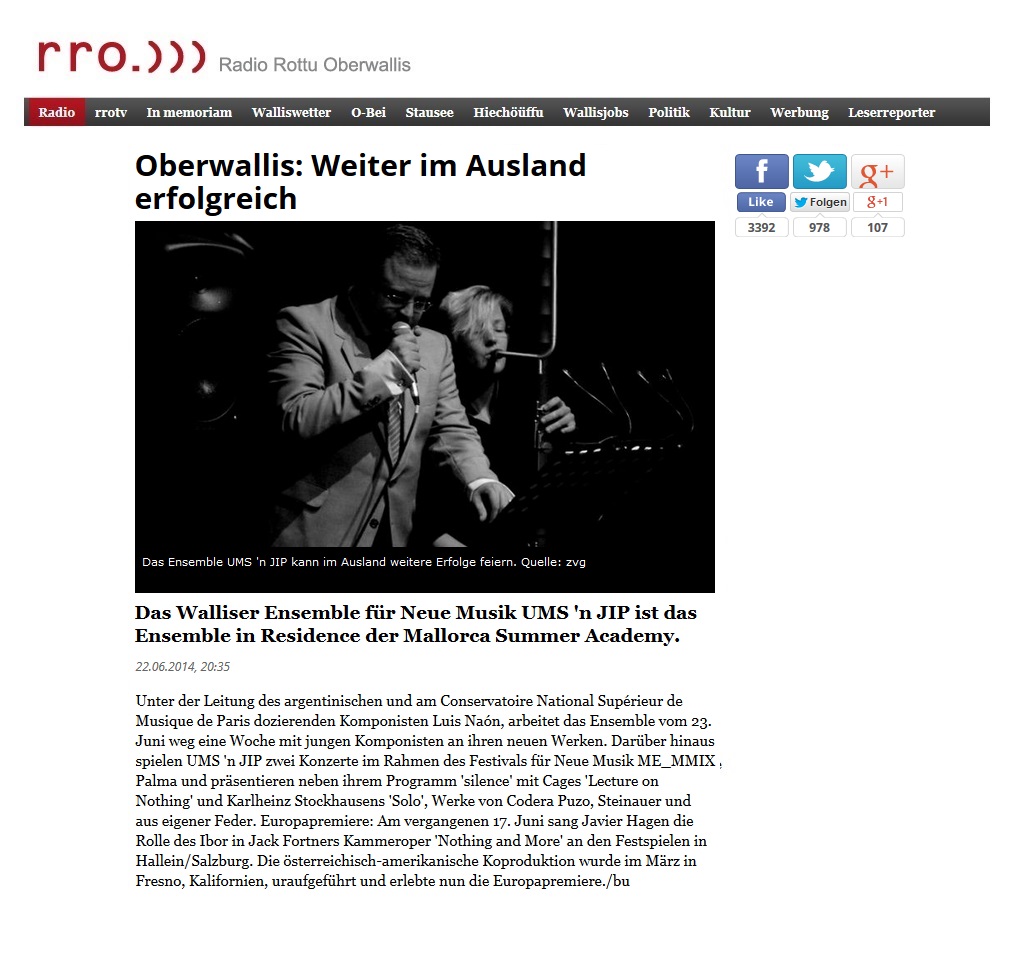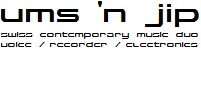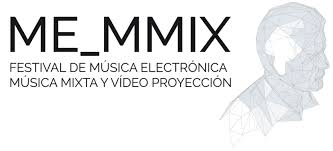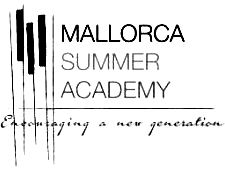SOLO (Stockhausen)
![]()
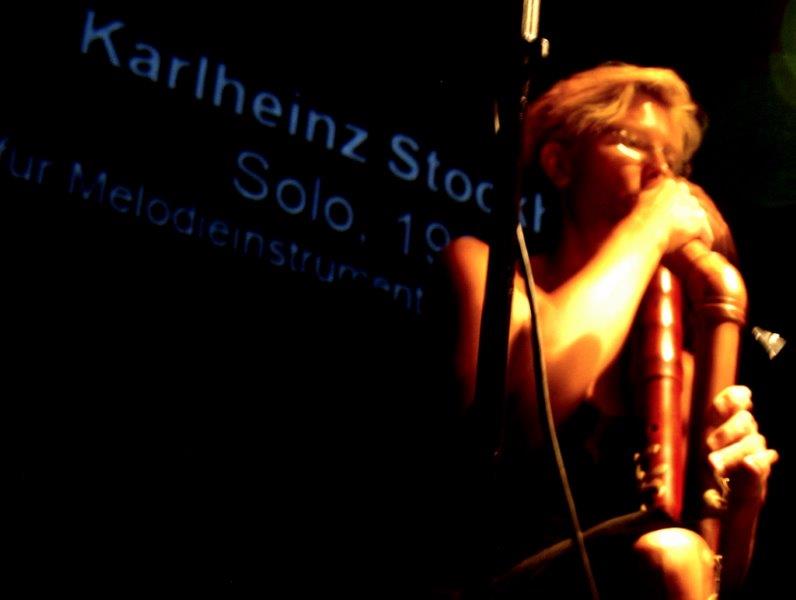
![]()
PROGRAM
Karlheinz Stockhausen (1928-2007)
Solo, 1965/66
für Melodieinstrument mit Rückkopplung
recorder & electronics (MaxMSP, 2014-)
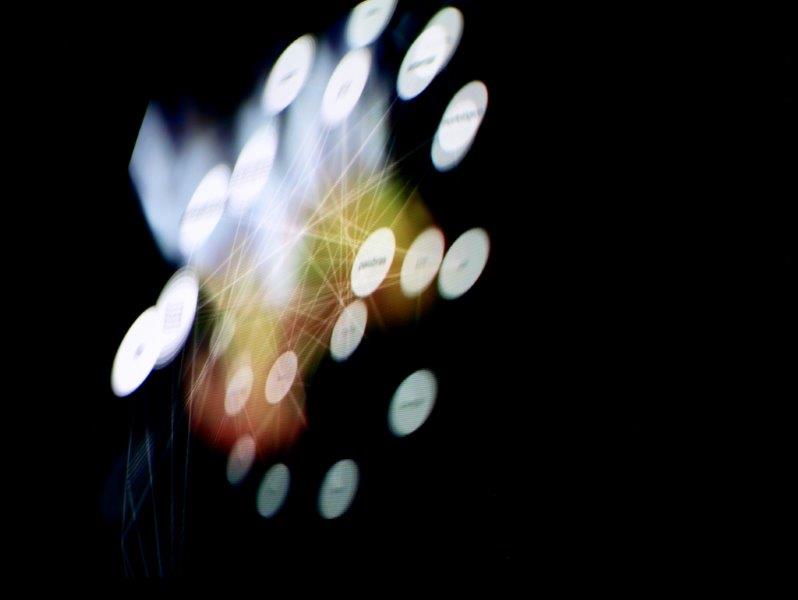
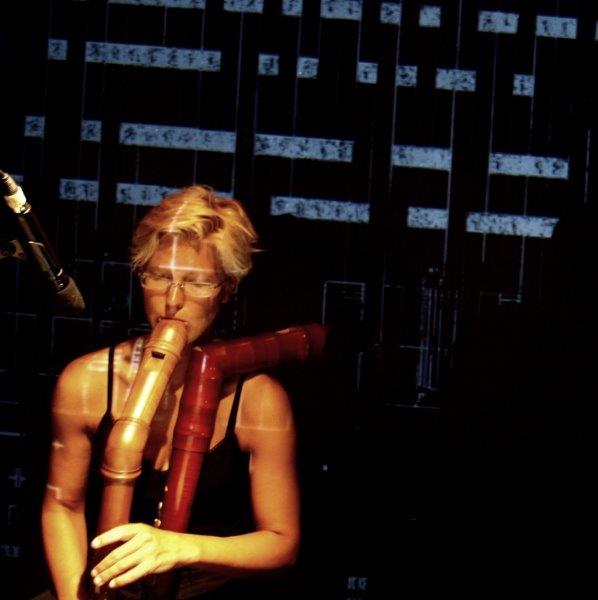
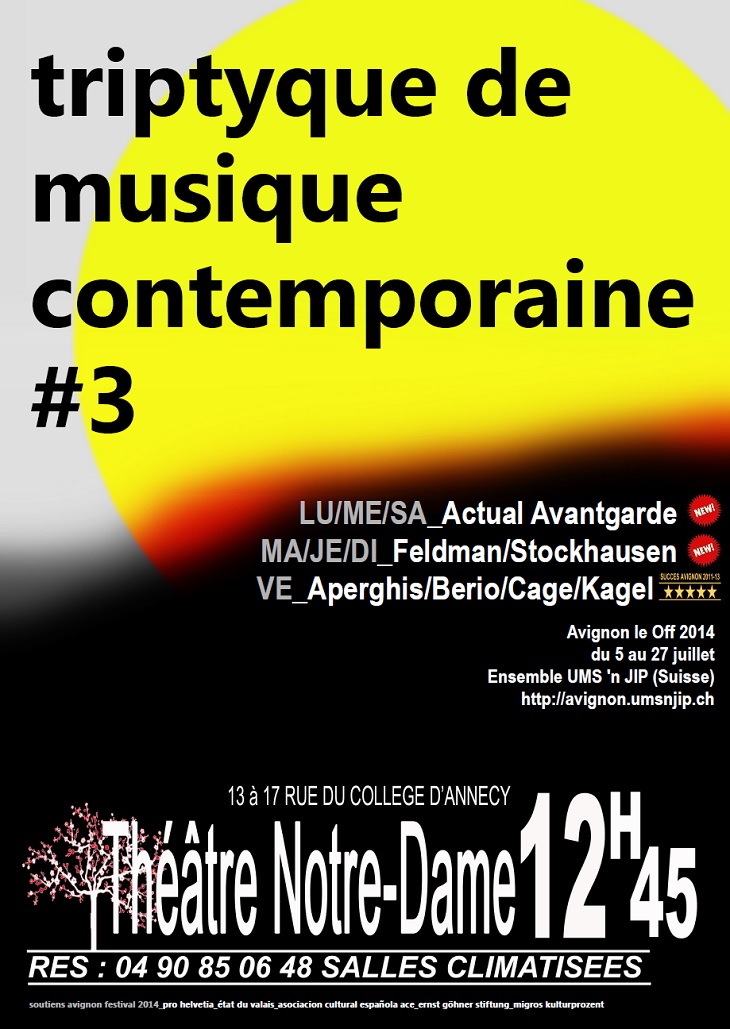
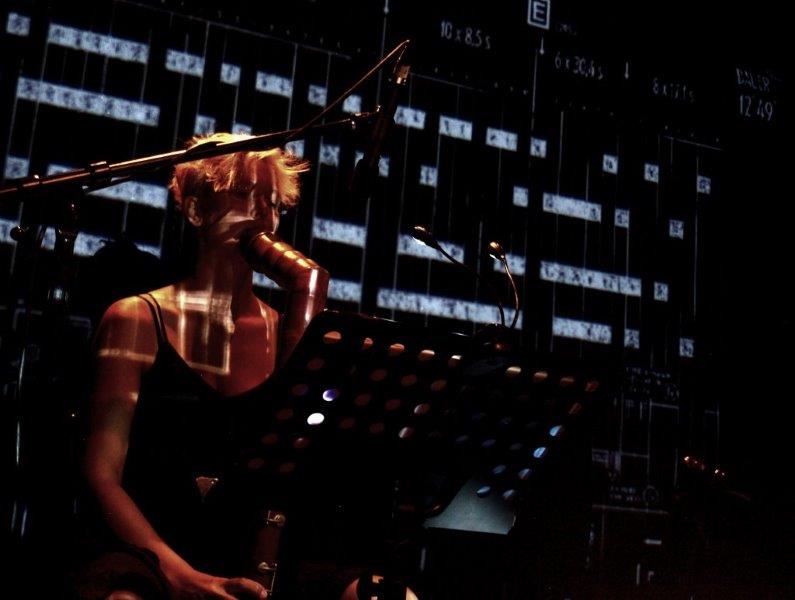
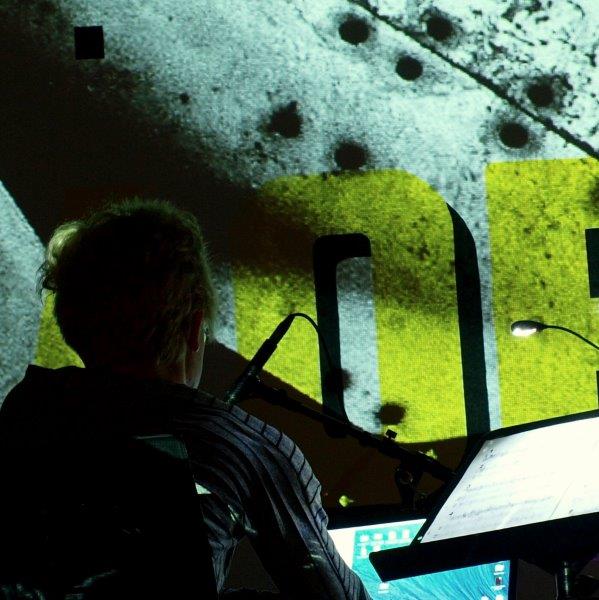
ME_MMIX Palma 2014 / Avignon Festival 2014
![]()
IDEA
Solo for a melody instrument with feedback is a work for a soloist with live electronics (four technician assistants) composed in 1965–66 by Karlheinz Stockhausen. It is Nr. 19 in his catalogue of works. Performance duration can vary from 10½ to 19 minutes.
History. Solo was first sketched in 1964 and is closely related to Plus-Minus, Momente, and Mikrophonie I. It was composed in March and April 1966 on a commission from the Japanese broadcasting network Nippon Hoso Kyokai, and was premiered in two different versions on 25 April 1966 in a public concert at the NHK in Tokyo which also featured the world premiere of Stockhausen's Telemusik. The soloists were Yasusuke Hirata, trombone, and Ryu Noguchi, flute; the assisting technicians were Akira Honma, M. Nagano, Shigeru Sato, and the director of the NHK studio, Wataru Uenami. The score is dedicated to Alfred Schlee, the director of the Vienna branch of Universal Edition. For the Tokyo premiere a special table with adjustable guide rollers was constructed, to enable different delay times for the tape playback. In subsequent performances a single tape was threaded through seven tape recorders, and eventually an apparatus was constructed especially for Solo in the Institute for Sonology at the University of Utrecht. However, this piece of equipment remained private property and was not made available for hire. By 1970 computers were already considered as a replacement for the tape delay, but was regarded prohibitively expensive. Twenty years later, after initial difficulties, one such version was made at IRCAM in 1992, using Max/MSP on a NeXT computer, and successfully performed in public in February and March 1993. In March 1998 this program was adapted to run on commercially available computers. Pre-programming on the computer can fulfill the functions originally assigned to the assistant technicians, thus requiring only a single assistant to control the sound. In notes for a 2002 performance also using a computerised system, Stockhausen acknowledged the IRCAM version, emphasising that it was done live, but nevertheless concluded that "It will still be a long time until young musicians … will be able to learn the interpretation of SOLO with suitable mobile apparatuses".
Analysis. Feedback (Rückkopplung) in this case refers to tape delay, through which music played by the soloist is made to return after periods of time specified in six different form plans, one of which is to be chosen for any performance. The performer is given six pages of conventionally notated material constituting the "content" of the work, and selects material according to certain criteria, playing it into a stereo pair of microphones that feed into the tape-loop system. Three assistants choose one or both recording channels, the degree of feedback, and the level of sound to be emitted from the speakers. This results in a regular though transformed periodic recurrence of the initial material, while the soloist adds new matrial over it. The system of the feedback plan therefore is the piece, since any musical relationships present on the sheets of music are destroyed by the atomisation and reorganisation created by this system.
Performance practice. Stockhausen discovered early on that the originally imagined spontaneous performance of Solo was far more difficult than expected. Consequently, versions prepared in advance were used from the outset, following Stockhausen’s suggestions. In the first commercial recording, with Vinko Globokar on trombone, Stockhausen supplemented the live performance with excerpts from his electronic composition Hymnen, following the method he had already used in Mikrophonie II, where he inserted tape recordings of his own previous compositions. In the case of the trombone recording of Solo, this involved a lengthy section from the Second Region of Hymnen, including its prefatory "bridge". The trombone phrases are initially answered by electro-acoustically distorted military-band sounds of the German national anthem, similar to the way in which sounds from Gesang der Jünglinge, Carré, and Momente played back on tape answer the technologically alienated live voices of the mixed choir in Mikrophonie II. By 1969, Stockhausen had also taken to merging Solo with other works in a single composite performance.
http://en.wikipedia.org/wiki/Solo_%28Stockhausen%29
![]()
VIDEO
ME_MMIX Palma 6/2014
![]()
KARLHEINZ STOCKHAUSEN
KARLHEINZ STOCKHAUSEN (22 August 1928 – 5 December 2007) was a German composer, widely acknowledged by critics as one of the most important but also controversial composers of the 20th and early 21st centuries. Another critic calls him "one of the great visionaries of 20th-century music". He is known for his ground-breaking work in electronic music, aleatory (controlled chance) in serial composition, and musical spatialization.
He was educated at the Hochschule für Musik Köln and the University of Cologne, and later studied with Olivier Messiaen in Paris, and with Werner Meyer-Eppler at the University of Bonn. One of the leading figures of the Darmstadt School, his compositions and theories were and remain widely influential, not only on composers of art music, but also on jazz and popular music. His works, composed over a period of nearly sixty years, eschew traditional forms. In addition to electronic music—both with and without live performers—they range from miniatures for musical boxes through works for solo instruments, songs, chamber music, choral and orchestral music, to a cycle of seven full-length operas. His theoretical and other writings comprise ten large volumes. He received numerous prizes and distinctions for his compositions, recordings, and for the scores produced by his publishing company. Some of his notable compositions include the series of nineteen Klavierstücke (Piano Pieces), Kontra-Punkte for ten instruments, the electronic/musique-concrète Gesang der Jünglinge, Gruppen for three orchestras, the percussion solo Zyklus, Kontakte, the cantata Momente, the live-electronic Mikrophonie I, Hymnen, Stimmung for six vocalists, Aus den sieben Tagen, Mantra for two pianos and electronics, Tierkreis, Inori for soloists and orchestra, and the gigantic opera cycle Licht. He died of sudden heart failure at the age of 79, on 5 December 2007 at his home in Kürten, Germany.
http://en.wikipedia.org/wiki/Karlheinz_Stockhausen
![]()
REFERENCES

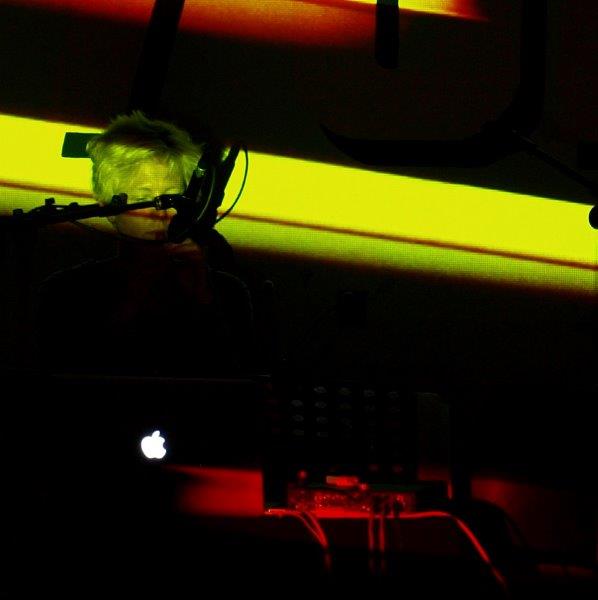
Avignon Festival 2014
![]()
SUPPORTS
![]()
PRESS
